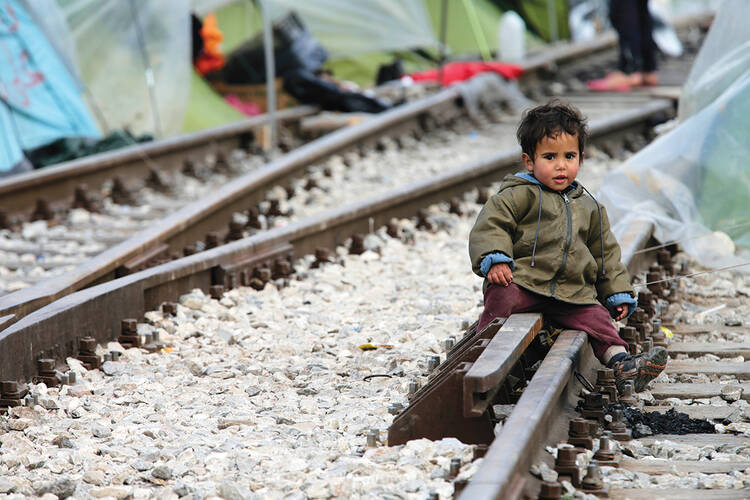High on the agenda for the September meeting of the U.N. General Assembly was the revision and reinvigoration of the global community’s approach to the treatment of displaced people and refugees. The global community has attempted, by fits and starts, to deal with an unprecedented humanitarian crisis, the worst since the end of World War II, as more than 65 million people around the world have been forced on the move by conflict, crime, poverty and climate.
Evidence of the urgency of the crisis came even as the high-level dialogue continued in New York on Sept. 23. Scores of bodies were pulled from the waters off the Egyptian coast three days after a boat carrying hundreds of migrants capsized in the Mediterranean while attempting to reach Europe. By Sept. 26 the death toll had reached 170. Many of the dead were women and children who were unable to swim away as the boat sank.
At the opening of the first-ever summit on Addressing Large Movements of Refugees and Migrants, world leaders approved a document on Sept. 19 meant to create the foundation for a more coordinated and humane response to the crisis. The agreement seeks to standardize responses to refugee situations and provide better education and jobs to refugees. It also encourages resettlement and includes plans for a campaign to combat xenophobia. That may prove an uphill struggle, however, as the document is not legally binding and comes at a time when refugees and migrants have become a divisive issue in Europe and the United States.
A number of countries rejected an earlier draft of the agreement that called on nations to resettle 10 percent of the refugee population each year. The United States and a number of other countries also objected to language in the original draft that said children should never be detained, so the agreement now says children should seldom, if ever, be detained.
"Instead of sharing responsibility, world leaders shirked it,” Amnesty International’s secretary general, Salil Shetty, said in a statement. Shetty complained that the agreement merely kicks the can down the road by calling for the adoption of separate global compacts for refugees and migrants within two years.
Eighty-six percent of the world's 21.3 million refugees are currently living in developing countries, and it is particularly hard for those countries to meet refugees' needs and provide them an education and a livelihood, according to Jill Marie, a senior policy and legislative specialist at Catholic Relief Services. Before the summit, C.R.S., the U.S. bishops' overseas relief and development agency, joined 30 other nongovernmental organizations in pledging a total of $1.2 billion to help address the refugee crisis over a three-year period.
Marie added that in addition to its monetary pledge, C.R.S. hopes the U.S. Congress would "put more pressure on the U.N. to update its humanitarian architecture," which currently is more the model addressing what World War II refugees faced than what today's refugees confront. "Refugees are no longer in camps but move into cities, with an uncle or a brother," Marie explained. Some are "paying rent to put a tent up in somebody's front yard and paying for their facilities," she said, which means it is "much harder to get access to these people, harder to find them" to assess their needs and help them.
"That's where the Catholic Church comes in," using its networks to find people, Marie said. Coordination and implementation of assistance to refugees is "better left to agencies like C.R.S.,” she added. "We have the agility. We work with local partners and we can move with them."








